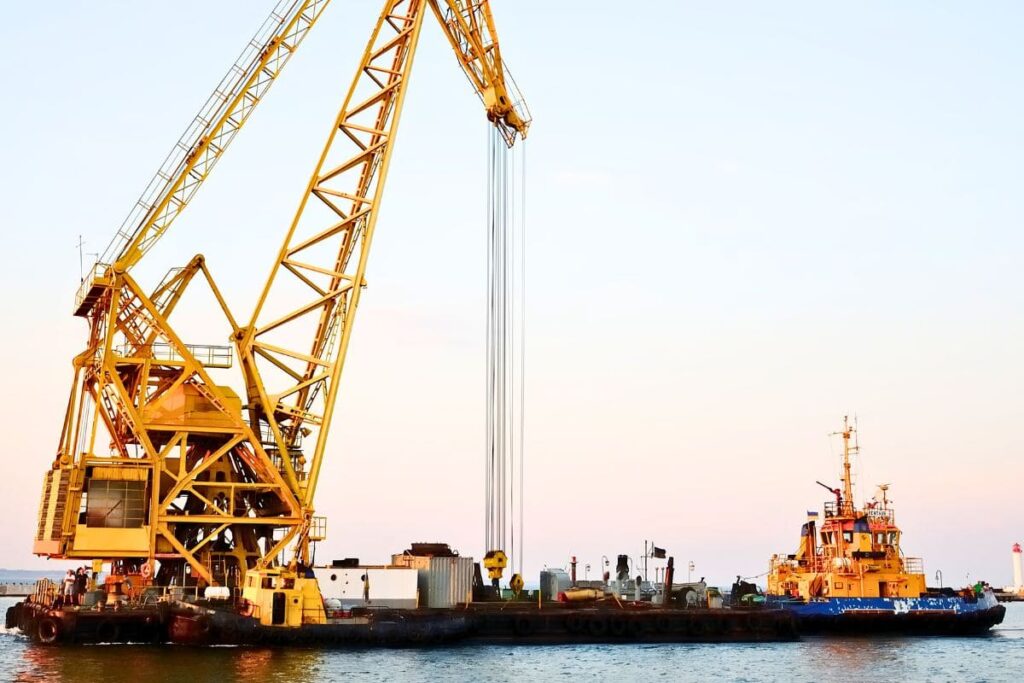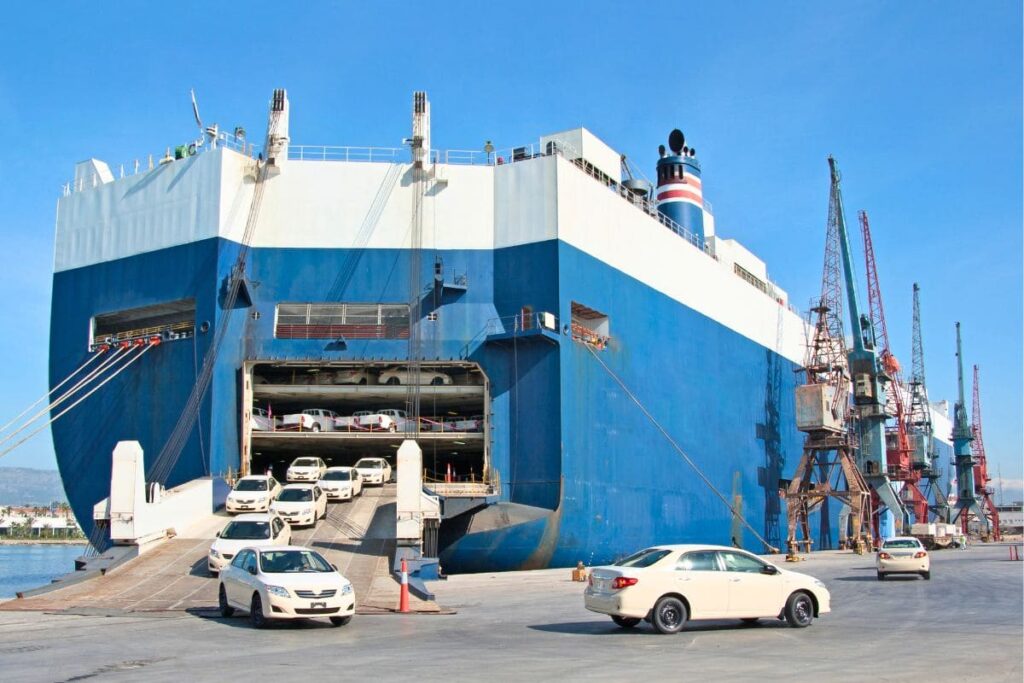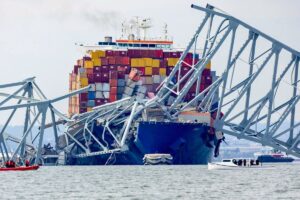Shipping oversized or unconventional cargo presents unique challenges. Many shippers struggle when their cargo or goods cannot fit in standard or larger containers. This can lead to delays, higher costs, and logistical headaches. This is where breakbulk shipping comes in as a solution.
What is Breakbulk Shipping and How Does it Work?
Breakbulk shipping is a method for transporting cargo that doesn’t fit in standard shipping containers or cargo bins. These goods are loaded individually onto a ship or barge. Common items include static cargo like machinery, steel girders, vehicles, and large equipment.
The process starts with preparing the cargo. Items are packed in crates, drums, or left as is, depending on their size and shape. Each piece is handled individually, ensuring it’s ready for the journey. Specialized breakbulk ships or a barge with onboard cranes facilitate lifting the items onto the vessel, one by one. The cargo is carefully arranged to ensure the ship or barge remains balanced. Proper stowage is crucial to prevent shifting during transit.
Once the cargo is loaded onto the ship, it’s securely lashed down to prevent movement and potential damage. The carrier then sets sail for its destination. During the voyage, the crew regularly checks the cargo to ensure everything remains secure. Upon arrival, the unloading process begins. The ship’s cranes or dockside equipment lift each item off the ship. This careful handling by the carrier continues to facilitate the safe placement of all cargo on the dock. From there, it’s transported to its final destination.
For example, a wind turbine blade might be shipped as breakbulk cargo. It’s too long and oddly shaped to fit in a container. Instead, it would be carefully loaded onto a ship’s deck or hold. Special cranes and equipment are used to handle such items. This allows for the safe transport of goods that would be impossible to ship in standard containerized forms.
Advantages and Disadvantages of Breakbulk Shipping
Breakbulk shipping has its own set of strengths and weaknesses that shippers must consider. It offers unique advantages for transporting oversized and irregularly shaped items but also comes with specific challenges.
Advantages
- Flexibility: Can handle oversized, heavy, and irregularly shaped items that don’t fit in standard containers. Ideal for transporting large machinery, construction equipment, and steel girders.
- Accessibility to Smaller Ports: Can be delivered to smaller ports that cannot accommodate large container ships. This allows access to more destinations and is crucial for reaching remote areas.
- Reduced Need for Deconstruction: Items can be shipped whole, avoiding the time and expense of breaking down and reassembling cargo. This makes the shipping process more efficient and cost-effective.
- Versatility in Packaging: Goods can be transported in various forms such as bags, boxes, crates, drums, or even without packaging. This versatility makes it suitable for a wide range of cargo types.
Disadvantages
- Increased Handling Time: Loading and unloading breakbulk cargo is labor-intensive and time-consuming. Each item must be handled individually, which can slow down the process and increase labor costs.
- Higher Risk of Damage: With more handling steps involved, there is a higher risk of damage to the cargo. Careful stowage and securing are essential to minimize this risk.
- Complex Logistics: Coordinating breakbulk shipments requires detailed planning and specialized knowledge. Shippers must ensure that the correct equipment is available and that the cargo is properly secured for transport.
- Limited Availability of Specialized Vessels: Relies on specialized ships equipped with cranes and other lifting equipment. These vessels are not as readily available as standard container ships, which can lead to scheduling challenges.
- Higher Costs: Due to the additional handling and the need for specialized equipment, breakbulk shipping can be more expensive than container shipping. Costs are also harder to estimate, requiring specific cargo descriptions, dimensions, and weights.
Table Comparison:
| Advantages | Disadvantages |
|---|---|
| Flexibility for oversized items | Increased handling time |
| Accessibility to smaller ports | Higher risk of damage |
| Reduced need for deconstruction | Complex logistics |
| Versatility in packaging | Limited availability of specialized vessels |
| Efficient for large machinery | Higher costs |
What Are Common Types of Breakbulk Cargo

Here are some common types of breakbulk cargo:
- Machinery: This includes large industrial machines, construction equipment, and manufacturing machinery. These items are often oversized and heavy, requiring special handling.
- Steel Products: Steel girders, beams, and structural steel components are commonly shipped as breakbulk cargo. These items are typically long and heavy, making them unsuitable for containers.
- Vehicles: While many vehicles can be shipped using RoRo methods, oversized or uniquely shaped vehicles, such as large construction trucks or military vehicles, are often transported as breakbulk cargo.
- Large Equipment: This category includes equipment used in industries such as mining, oil and gas, and power generation. Examples include turbines, generators, and drilling equipment.
- Construction Materials: Items like precast concrete components, pipes, and scaffolding materials are transported as breakbulk due to their size and shape.
- Project Cargo: This refers to complex shipments associated with large projects, such as infrastructure development or industrial plant construction. These shipments often include a mix of machinery, equipment, and materials that are too large for containers.
- Wood and Timber: Logs, lumber, and other large wood products are commonly shipped as breakbulk cargo. These items are typically bundled or crated for transport.
- Bagged Goods: Products like coffee, cocoa, and grains, which are packed in bags, can also be shipped as breakbulk cargo. These items are usually stacked and secured on pallets.
- Barrels and Drums: Liquids, chemicals, and other bulk materials are often shipped in barrels or drums. These containers are individually loaded onto the ship.
- Reels and Rolls: This includes items like cable reels, paper rolls, and fabric rolls. These items are often large and heavy, making them unsuitable for containerization.
Each type of breakbulk cargo requires specialized handling and equipment to ensure safe and efficient transport.
How is Breakbulk Cargo Calculated?
Breakbulk cargo is calculated by weight or volume. Freight rates are often based on metric tons or cubic meters (CBM). To determine the volume, the cargo’s length, width, and height are measured and multiplied. Weight calculations consider the total mass of the shipment.
Special consideration is given to the cargo’s shape and handling requirements. Additional costs, such as port fees and handling charges, are factored into the total price.
Using a CBM calculator can help quickly and accurately determine the volume in cubic meters.
RO-RO (Roll On-Roll Off) vs. Breakbulk

Ro-Ro and breakbulk shipping are two distinct methods for transporting non-containerized cargo. Ro-Ro involves driving wheeled vehicles and machinery directly onto and off specialized vessels via built-in ramps, commonly used in the automotive industry. In contrast, breakbulk shipping handles cargo piece by piece using cranes, ideal for oversized goods like machinery parts and construction materials. Each method offers unique advantages tailored to different types of cargo and logistical needs.
Key Differences
- Cargo Type:
- Ro-Ro: Suited for wheeled vehicles and machinery.
- Breakbulk: Suited for non-containerized, oversized, and irregularly shaped items.
- Loading and Unloading:
- Ro-Ro: Vehicles are driven on and off the ship using ramps.
- Breakbulk: Items are lifted onto and off the ship using cranes.
- Efficiency:
- Ro-Ro: Faster loading and unloading due to the driving method.
- Breakbulk: Slower, requires more planning and handling equipment. Loading and discharging is very labor intensive.
- Protection:
- Ro-Ro: Vehicles are typically enclosed within the ship, providing protection from the elements.
- Breakbulk: Cargo is exposed during loading and unloading, requiring additional precautions.
Example Comparison Ro-Ro vs Breakbulk
For example, shipping a large construction vehicle like a bulldozer is ideal for RoRo. The bulldozer is driven onto the ship and secured. At the destination, it’s driven off, making the process efficient and straightforward. In contrast, transporting a wind turbine blade requires breakbulk shipping. The blade is too large and irregularly shaped for containers or driving on and off. It’s carefully lifted onto the ship and secured with specialized equipment.







